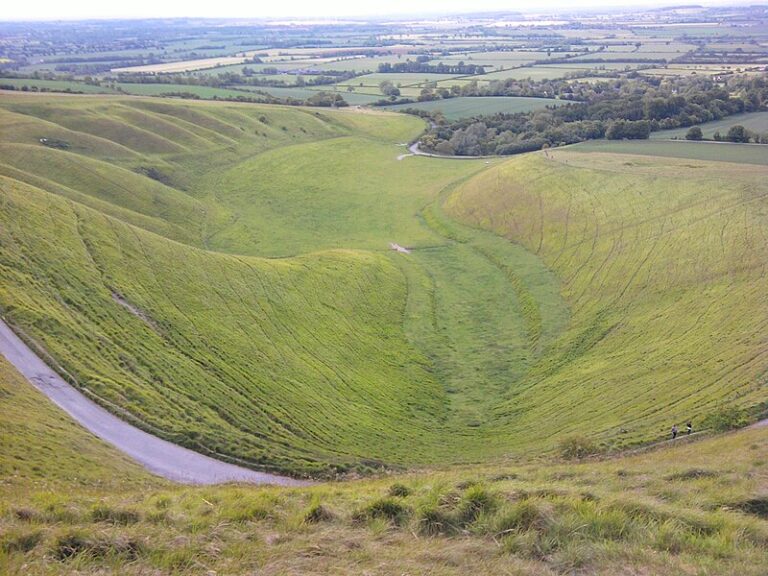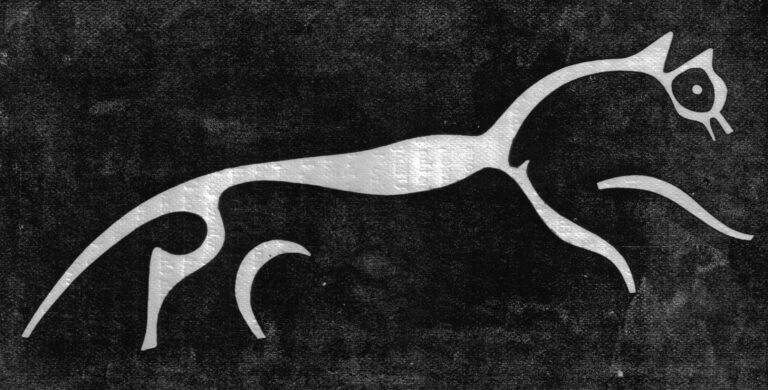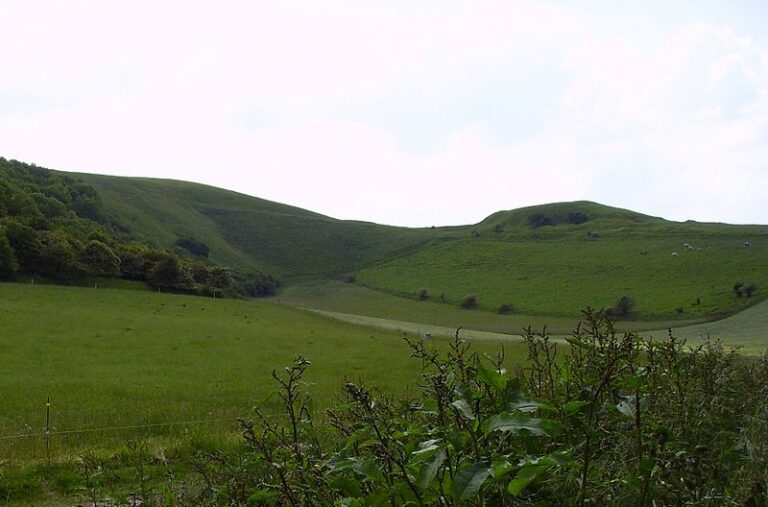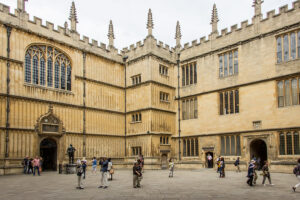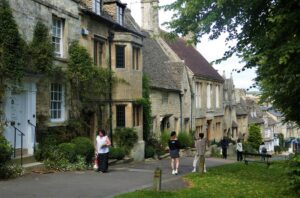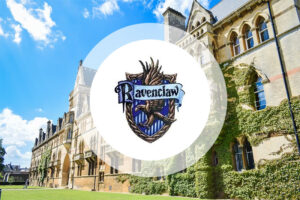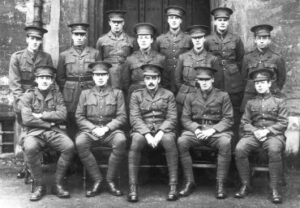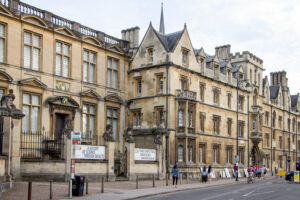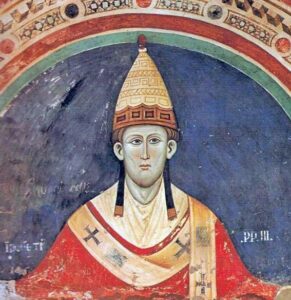The Uffington White Horse is an ancient hill figure etched into the chalky hills of Oxfordshire. This prehistoric masterpiece is thought to date back over 3,000 years to the late Bronze Age, making it one of the oldest hill figures in Britain!
While the exact purpose of the Uffington White Horse remains shrouded in mystery, various theories abound. Some believe it served as a religious or ceremonial symbol, while others suggest it may have had practical or navigational purposes.
Over the centuries, the Uffington White Horse has become an iconic symbol of the English countryside, attracting visitors from far and wide to marvel at its beauty and ponder its origins. Today, the figure is protected as a Scheduled Ancient Monument and is cared for by the National Trust, ensuring that this ancient wonder will continue to captivate and inspire future generations.
So, let’s see how you can visit it from Oxford!
What is the Uffington White Horse?
The Uffington White Horse is a prehistoric hill figure located in the English county of Oxfordshire. It is one of the oldest hill figures in Britain, dating back over 3,000 years to the late Bronze Age. The figure depicts a stylized horse, measuring approximately 110 meters in length, and is carved into the chalk hillside of White Horse Hill, part of the Berkshire Downs.
So... Who Made the Uffington White Horse?
The exact origins of the Uffington White Horse actually remain shrouded in mystery, and there is no definitive answer to who made it. However, it is believed to have been created by ancient peoples during the late Bronze Age, over 3,000 years ago.
Scholars and archaeologists have speculated about the possible cultural, religious, or practical motivations behind its creation, but no conclusive evidence has been found. So, how do we know the chalky horse is 3,000 years old? Well:
Archaeological surveys and excavations in the area have uncovered artifacts and features dating back to the late Bronze Age, providing a chronological context for the creation of the Uffington White Horse.
References to the Uffington White Horse can be found in historical documents dating as far back as the 11th century, indicating that the figure has been recognized and documented for over a thousand years.
The weathering patterns observed on the Uffington White Horse suggest that it has been exposed to the elements for a significant period of time. The gradual erosion and natural weathering of the chalk hills provide further evidence of the figure’s antiquity.
Comparative analysis of the Uffington White Horse with other hill figures and prehistoric art forms suggests that it shares stylistic and thematic similarities with artifacts and monuments from the late Bronze Age, further supporting its ancient origins.
While direct dating of the Uffington White Horse itself is challenging due to its geological composition, nearby archaeological sites and artifacts have been radiocarbon dated to the late Bronze Age, providing indirect evidence of the figure’s age.
What To See Around the Uffington Horse
Around the Uffington White Horse, visitors can explore a variety of fascinating attractions and landmarks that offer insights into the rich history and natural beauty of the surrounding area. Here are some notable sights to see:
Uffington Castle
Located on White Horse Hill, Uffington Castle is an Iron Age hillfort with earthwork defenses dating back over 2,500 years. Visitors can explore the remains of the hillfort and enjoy panoramic views of the surrounding countryside.
Dragon Hill
Just below the Uffington White Horse, Dragon Hill is a natural chalk mound with a legendary association with the mythical dragon slain by St. George. According to folklore, the bare patch of earth at the summit is where the dragon’s blood spilled, preventing grass from growing.
Vale of White Horse
The Uffington White Horse is part of the Vale of White Horse, a scenic area known for its rolling hills, charming villages, and walking trails. Visitors can explore the countryside on foot or by bike, taking in the idyllic landscapes and panoramic views.
Wayland's Smithy
This Neolithic burial chamber is located a short distance from the Uffington White Horse. Dating back over 5,000 years, Wayland’s Smithy is one of the best-preserved long barrows in Britain and offers a glimpse into ancient burial practices.
Ashdown House
Situated nearby, Ashdown House is a 17th-century mansion set amidst picturesque gardens and woodlands. Visitors can tour the historic house, which features lavish interiors and stunning architectural details.
Faringdon Folly Tower
A short drive from Uffington, Faringdon Folly Tower is a distinctive landmark built in the 1930s. Visitors can climb to the top of the tower for breathtaking views of the surrounding countryside.
How to Get to the Uffington White Horse from Oxford
To travel from Oxford to the Uffington White Horse, you can take a combination of public transportation and walking:
Train: Start by taking a train from Oxford to Didcot Parkway Station. Trains from Oxford to Didcot Parkway run frequently throughout the day and the journey takes approximately 15-20 minutes.
Bus: From Didcot Parkway Station, you can take a bus to the nearby town of Wantage. Buses from Didcot Parkway to Wantage run regularly and the journey takes around 30 minutes.
Taxi or Walking: Once you arrive in Wantage, you can either take a taxi or walk to the Uffington White Horse. The distance from Wantage to the White Horse Hill is approximately 8 miles (13 kilometers), so it’s about a 2-3 hour walk depending on your pace. Alternatively, you can hire a taxi for a quicker journey.
Footpath: There is also a footpath from Wantage to the Uffington White Horse that follows parts of the ancient Ridgeway Trail. This scenic route takes you through picturesque countryside and offers stunning views of the surrounding landscape.

